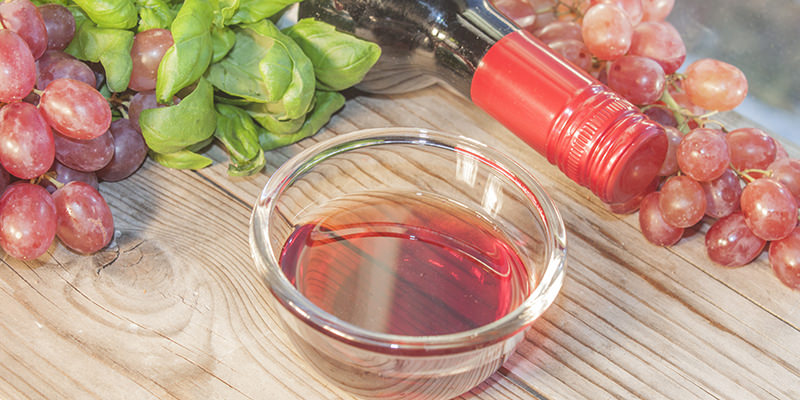Generally we prefer to make other things into wine. Grapes, for instance. But in the event that you don’t necessarily want to keep a certain bottle of wine, or you just have so much wine that some Mr. Wizard experimentation seems justifiable, you can also turn wine into other things.
No, we don’t mean bad decisions, or that Paint Nite rendition of the Mona Lisa that looks nothing like the classic mystery smile and more like a Miley Cyrus tongue spasm. We mean vinegar. Red wine vinegar. The delicately sour, richly fruity, lively liquid stuff that gives salad (and pretty much anything you’d like) some much needed zest. If you have the patience to make your own—basically allowing some bacteria to transform the acids in your wine to acetic acid—you’ll end up with something with a lot more complexity than what you can find in stores, at lower cost.
A couple of things to know before making your own red wine vinegar: use good wine (not great wine, not a $100 Barolo, but something decent—you’ll get better vinegar with better wine). Find a solid, well-tested recipe (ours is just a basic run-through, not a recipe). And yes, also, there’s a terrifying (to non-Kombucha fans) term associated with homemade vinegar: mother. Yes, just like Norman Bates from Psycho, you’ll need to kind of obsess over your (vinegar) mother.
Actually, you won’t have to obsess. Either purchase one, or a raw vinegar with mother intact, or make your own by allowing wine (with a bit of water) to sit in a container—ideally wide-mouthed, with a porous opening, since oxidation is the friend of vinegar-creation—until some moderate warmth and time helps naturally occurring bacteria create a mother for you.
The mother* is essentially—and bare with us—a gooey glob of vinegar-producing organisms, again, like a scoby in Kombucha. (For some reason, to create anything deliciously tart, you need to deal with quivering globs.) You put it in with your leftover wine and some water (higher ABV inhibits bacterial growth), keep dosing it with wine, and taste it until the balance of acidity and fruit works for you. Then, per Norman Bates, feel free to keep the mother around for a weirdly long amount of time (only if you’re going to make more vinegar, and in this case, store it in some actual vinegar).
Meanwhile, strain the vinegar itself (filtering out any particulate matter from the mother), and cap it. At this point you want to stop oxidation. In a few months, your vinegar will be mellow but still lively, so feel free to make some salad, and celebrate your newfound role as an artisan vinegar maker.
*Per MotherEarthNews, whom we’re inclined to trust on things like this, if you “see mold, or smell a paint-thinner aroma, toss the batch.”

